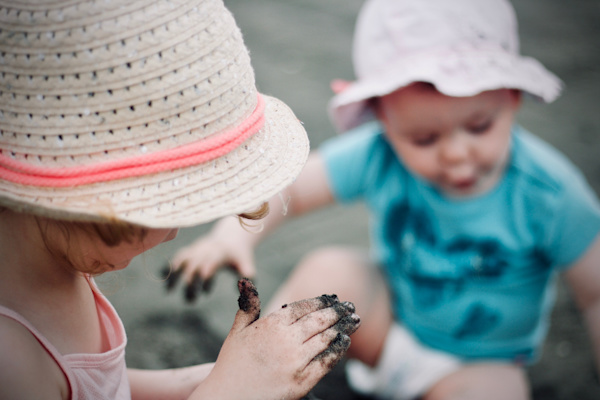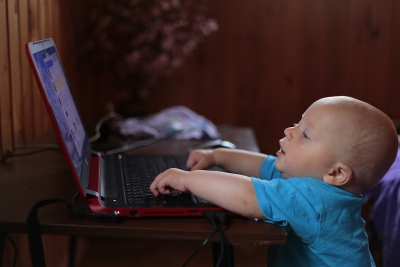
The Benefits of Teaching your Child to Monotask
Teaching your Child to Monotask
Do you ever feel as though your child becomes distracted easily, that they are absent-minded, or that they struggle to finish things they start? You’re not alone. It’s almost as though children and young adults lack the ability to focus. Aside from binge-watching shows on Netflix, they might be constantly switching between tasks, checking notifications, scrolling through news feeds, and taking selfies while they’re studying.
While it’s easy to point fingers at smartphones as the culprit to this seemingly worldwide phenomenon, the deeper issue lies in the pressures of staying productive in the busy lives we live. From an early age, we’ve been teaching our children the terrible and destructive habit of multitasking.
The problem with multitasking
We love the idea of multitasking. Not only do we believe that multitasking is a great way to increase our productivity but we also slap it on our resumes as a highlighted skill. We’ve become accustomed to the idea that we can do multiple things at once but we fail to take a step back and analyze the potential consequences divided attention has on our brains.
Being creatures that get bored easily, we’ve gotten used to the endless stream of stimulation the internet and smartphones afford us. We listen to music while reading, check the election results while walking, and watch cat videos while eating. At work, it’s no different. We write emails while answering texts, talk on the phone while organizing files, and eat lunch at our desk while trying to finish that spreadsheet we’ve been working on.
Although we may value multitasking as a productivity skill, it works against you. In a research paper published back in 2001 by Michigan University, Dr. David Meyer, a cognitive scientist, uncovered the truth about multitasking.[1] The research demonstrated that humans have distinct bandwidth challenges that can make multitasking ‘problematic’.
The study revealed that the more we multitask, the less we can accomplish. Contrary to what we like to believe about multitasking, we aren’t really working on multiple things at once, we’re just quickly switching back and forth between tasks.
What effect does this have on our productivity? Multitasking in everyday life doesn’t translate to performance benefits.[2] In fact, switching from task to task actually negatively affects your productivity output and makes you less effective at completing work.
Even scarier, studies indicate that multitasking lowers IQ, and can even cause brain damage.[3] Researchers in another study found that multitasking resulted in decreased gray matter density in certain parts of the brain.[4] When it comes to children, these results can have serious consequences.
Multitasking and children
From a young age, children are usually pretty good at focusing on one thing. They easily apply all their attention to one activity at a time, be it coloring with markers or playing with a tablet. But as we get older, and our attention more divided, we lose our intrinsic ability to tune out distractions limiting our deep processing and learning. This makes it difficult to focus on a single task for an extended period of time.
With so many distractions available at just an arm’s length away and claims that “I can use my smartphone while I study!” it’s easy to see that if not used wisely, smartphones can have negative impacts..
With all its benefits, technology holds some responsibility for affecting the mental fortitude of the youngest members of our society. In the presence of a smartphone, children become easily distracted by notifications. The urge to check their phone is too strong. When their screen lights up, they stop whatever they’re doing and check the alert.
Studies showing the adverse effects of multitasking and the distractions caused by smartphones align with recent findings, which uncovered a drop in reading skills and retention in children over the past years.[5]
Smartphone overuse causes the brain to neglect the circuits that control more traditional methods of learning, such as reading, writing, and concentration.[6]Can diminishing brain power be directly attributed to smartphone use and multitasking? The answer isn’t certain. What we do know is that when a child works on one thing at a time, the mind wires itself to be less distracted.
A child drawing with a jar of crayons
Monotasking
Monotasking, also known as single-tasking, is the act of doing only one thing at a time, especially to work more effectively.[7] To successfully monotask, a person needs to dedicate their attention to a given task while minimizing potential interruptions until complete, or a significant period of time has elapsed.
Only when monotasking are we able to significantly store information into the recording area of our brain. To help your child maintain their monotasking abilities, here are some activities that encourage good work habits:
Make to-do lists
To-do lists are a great way to organize your thoughts into a structured list of prioritized items. These can either be done the night before or the morning of; the goal is to get your child into the mindset of organizing goals for the day and understanding what can be accomplished when their attention is undivided. Incentives always help. Depending on the age of the child, work with them to come up with a prize if they finish all of their tasks.
Teach them how to complete projects
The key to a successful project is divide and conquer. Work with your child to break the overall vision down into steps, whether it’s building a wooden glider or completing an essay about a summer reading book. No matter the size of the project, when done in intervals, it’s more likely to succeed. Once broken down into steps, have them complete each step (about 2 hours at a time) in one sitting with limited distraction.
Eliminate distractions
Monotasking is less about focusing in on one goal, and more about eliminating distractions that prevent you from accomplishing the one goal. To maximize efficiency, get your child to complete a task without becoming distracted.
Now before you go and start unplugging every piece of technology in the house, keep in mind that it’s not the devices that are the problem, it’s multitasking that we need to be wary of. Activities like listening to music while studying are great to keep your child engaged. The problem with multitasking manifests when our attention is divided into two or more tasks that require large amounts of processing power.
While your child may claim they can Snapchat and study at the same time, don’t believe them. Learning to properly monotask will not only help them with their biology test but also with life. In a world of multitaskers, they’ll have the unique ability to focus.
Where to go from here
The purpose of this growing collection of articles is to examine the benefits and the dangers of the internet, as well as the effects it may have on your child’s mind and their daily life. Consult these articles for advice on how to help your child stay safe and healthy in a digital world.
Is there anything you’d like to add, have we missed anything? If you’re interested in sharing your experiences with us or writing a guest post for us, send us an email via hello@mudita.com!
Please feel free to get in touch via social media (send us some photos or videos too), you can find us on Facebook, Twitter and Instagram, let’s connect! To learn more about Mudita, take a look at our website and our other posts.
If you enjoyed reading this article, please share and recommend it!
Related stories

Help your Kids Maintain a Sleep Schedule During Winter Break
Discover tips for maintaining your child's sleep schedule during winter break & embrace holiday harmony with Mudita's guide to healthy sleep habits.

Well-rested kids are happy kids (and also happy parents)!
”Happiness consists of getting enough sleep. Just that, nothing more.” — Robert A. Heinlein

Don’t Let Your Child Use Wireless Devices Before They’re Two
AAP released recommendations for media use among children stating that infants from 0-2 years old shouldn't experience any screen time at all.
If you'd like to receive the best stories from our blog, keep up to date with our progress and get notified about our product releases and special discounts.